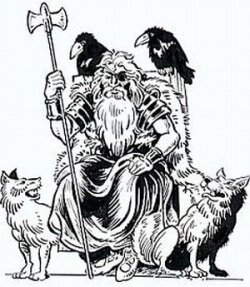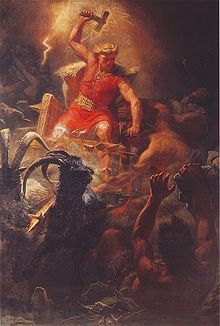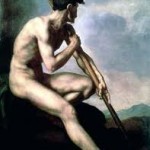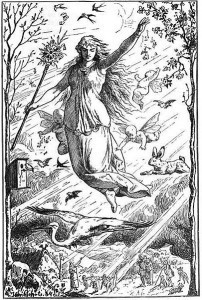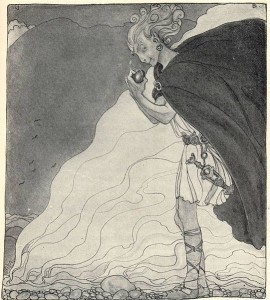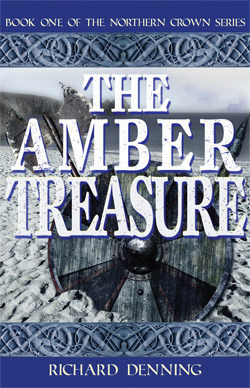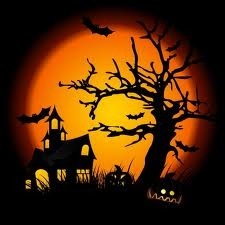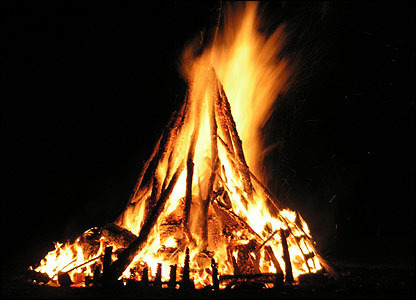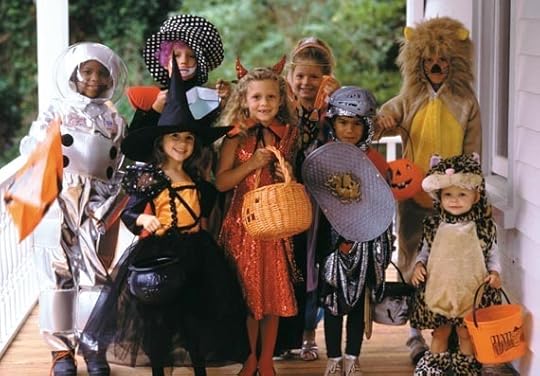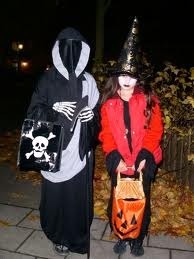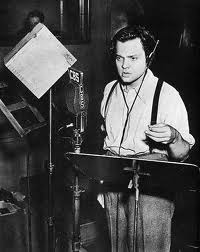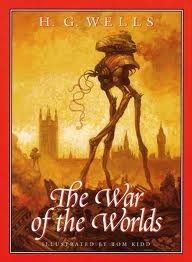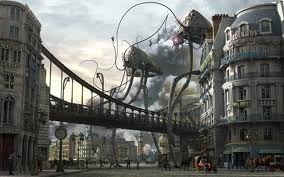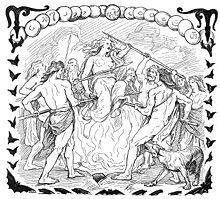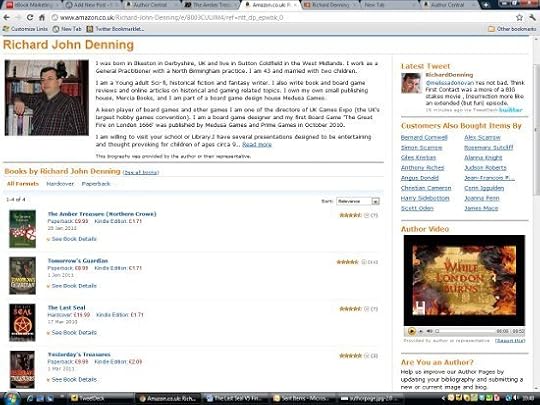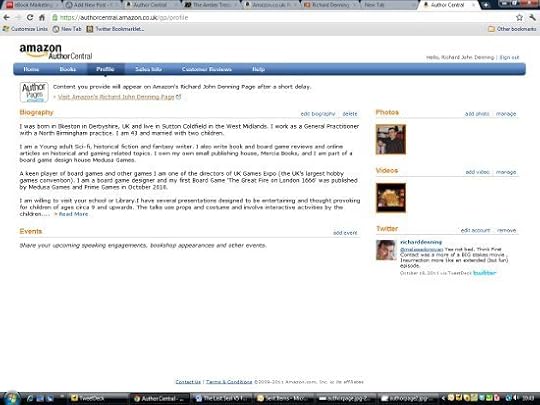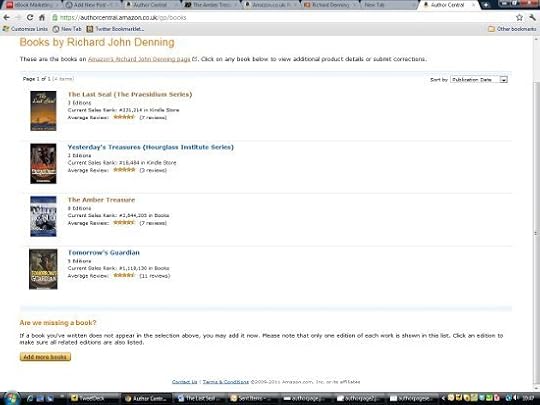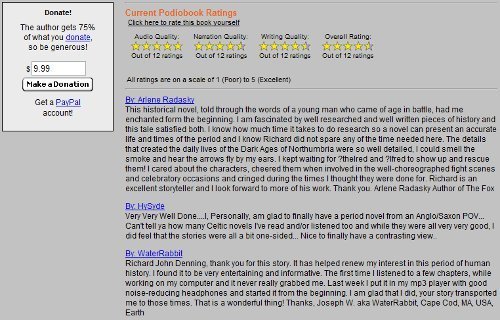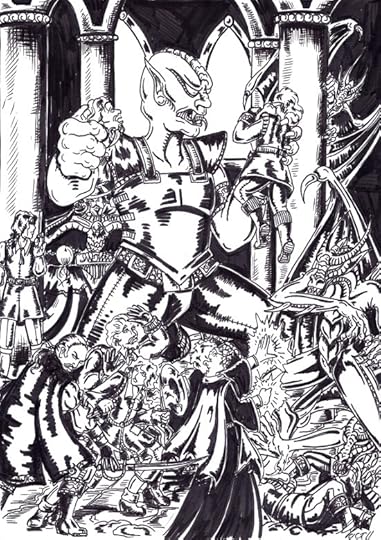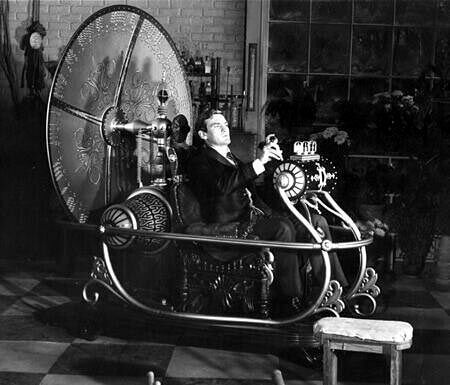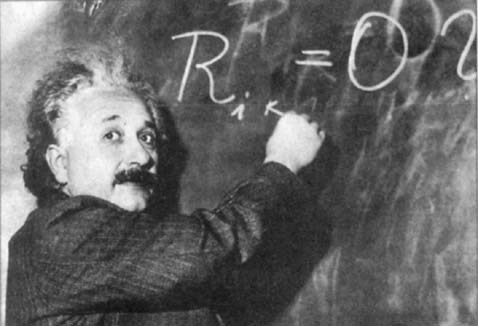Richard Denning's Blog, page 14
November 3, 2011
Symbols of the Saxon gods of Old England
I recently wrote an article about the Anglo-Saxon Gods of Old England – those that our ancestors worshipped before England became Christian. Just as Christianity is linked to the powerful symbol of the Cross and Judaism to that of the Star of David or the Menora, these gods had their own symbols that would be used on pottery, weapons and on pendants worn by the faithful. Here are some of the main Saxon gods and their symbols.
Woden (Odin)
Woden is the chief god of the Anglo-Norse Pantheon. He is seen as being often a grumpy old man, or a warrior and sometimes a shadowy cloaked figure sneaking around watching men. He was a god of life and death, of of war. In Saxon and in Norse mythology, Woden/Odin was the highest ranking god and the leader of the Wild Hunt. He was often imagined galloping across the sky in a chariot pulled by white horses. It is thought that he is the original inspiration for Santa Claus. There are a number of symbols associated with him. Both the Raven and the Wolf are animals linked to Woden. He is often depicted with a spear.
 This is another symbol linked to Woden. It is not a cross but is meant to be a wheel representing the circle of life and death over which woden held power. This symbol might well be on pendants, clothing and weapons.
This is another symbol linked to Woden. It is not a cross but is meant to be a wheel representing the circle of life and death over which woden held power. This symbol might well be on pendants, clothing and weapons.
Frige/Frigga
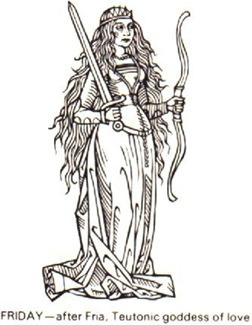
Frige was the wife of Woden and so queen of the gods. She was the goddess of Marriage, Child-birth, the Home and the Harvest. The stork is associated with her as is the spinning wheel. The constellation 'Orion's Belt' was called 'Frige's Distaff'. Friday is named after her. Her Festival was harvest time.
Thunor (Thor)
Thunor (Thor) is famously see as a hammer-wielding god with power over thunder and lightning as well as storms. He also has a role as the protector of mankind. Saxons also believed he had a gentler side involving healing, and fertility.
The most famous symbol of Thunor ( often worn around the neck) is the hammer symbol.
Tiw (Tyr)
Tiw is the Anglo-Saxon god of War and Combat. His sacred animal was the wolf. He is often depicted as having only one hand as he lost one to the giant wolf Fenris. Our day Tuesday is named after Tiw. This rune is associated with him and may represent a spear:
Ingui-Freyr
Ingui- Freya (Norse Freya) was the male God of Fertility. His symbol was the boar.
Freya/Freo
Freo, brother of Ingui-Freya was the Saxon Love goddess. Her sacred animals are like her brother the boar but also the cat. Cats pulled her chariot, and she sometimes rode a boar. She had a magic cloak of falcon feathers.
Eostre
Eostre is a fairly obscure goddess of which we know far less than the others. She seems to be a goddess of purity, youth, beauty and of rebirth. Her festival became the later Christian Easter and the rabbit was the sacred animal to Eostre, and a symbol of fertility. The egg also symbolised fertility and rebirth of spring. The whiteness of the egg and the rabbit also indicated purity. Cakes or buns (later the hot cross buns) may even date to her festival and indeed the Cross MIGHT be the sun wheel (which is the same as Woden's symbol) representing the turning of the year and the coming of light.
Loki
Loki is a bit of a puzzle. He is strongly mentioned in Norse Mythology BUT not much in Anglo-Saxon literature. So was he part of Saxon mythology? Probably he was because he is mentioned in SOME stories for example Beowulf. Many other Saxon gods are NOT mentioned much but enough echoes in tradition and symbology are about to suggest they were worshipped. Loki is the God of Cunning and Deceit. Later, in the Christian era he became associated with the idea of the Devil.
Loki is the trickster god. He manipulates and plots. BUT he is also the catalyst that makes things happen and moves things forward. It has been suggsted that the snake might be associated with him – interesting that it is also the form that Satan took in the Garden of Eden. Another example of how mythologies and religions borrow and share elements.
In my Dark Ages Historical fiction, The Amber Treasure and its sequel, Child of Loki these beliefs and the new Christian ones appear and have influences on the characters and their world.
October 30, 2011
Origins of Halloween in Britain
I often hear people saying that Halloween is not a traditional British holiday and we should stick to Bonfire night on the 5th November. Now don't get me wrong. I am a keen fan of Bonfire night – celebrated ever since the 1605 Gunpowder Plot failed and next weekend I will be at a firework display like many people. I will enjoy the huge bonfire, watch the fire work display and eat my share of hot dogs, BUT people are WRONG in believing that Halloween is not a traditional British event. Indeed the origins of Halloween are older that Bonfire Night.
Not English is it?
OK – confession time. Halloween is not an OLD English tradition. The Saxons did not make much of it. BUT then again the ancient Saxons were Pagan and neither Celtic NOR Christian. It from those roots which became eventually blended in the British make up from where Halloween comes. So the English did not once upon a time celebrate Halloween but eventually Britain came to.
So why do we celebrate Halloween?
The Romans used to hold a festival remembering their dead in October. They also had a festival for the goddess Pomona who was the goddess of trees and fruit. This the Halloween idea of apple bobbing is probably a Roman tradition. When they came to Britain they found the locals celebrating Samhain and blended there own festivals with it.
Halloween is on the eve of a Catholic festival, All Saints (1st November) and also on the eve of the pagan Celtic festival known as Samhain. So as with many other festivals (Easter and Christmas for example) this celebration sees pagan and Christian celebrations mixed together.
In 835 the Church made 1st November a church holiday to honour all the saints. It became customary to pray for the dead on this date. Another name for All Saints Day is 'All Hallows' . Halloween comes from All Hallow Even, the evening before All Hallows day.
Meanwhile the ancient Celtic festival of Samhain was thought to be the start of the year marking the end of Summer and the beginning of Winter. It was the very start of our journey through the dark winter months from which Yuletide (Christmas) would give us a respite almost 2 months later). The Celts believed that on this night spirits were most likely to be seen on earth. They built bonfires to frighten the ghost away. As we now know in England, November the 5th eventually became Bonfire night but Halloween and Bonfire Night have a common origin. Fire scares away the ghosts and gives us comfort as the darkness gathers.
Trick or Treat
Again British folk sometimes say that Trick or Treat is an American tradition. BUT this may well originate from a custom called souling. People would make house calls begging for soul cakes. In exchange for a cake they promised to pray for the donors' deceased relatives. Perhaps this is where Treats come from.
On the 4th of November in the North of England folk would often celebrate Mischief Night and children would play practical jokes on their neighbours. The earliest reference to the night is from 1790 when fellows of St John's College, Oxford, studied "an Ode to Fun". which praised children's tricks on Mischief Night . Once Mischeif Night was in May but was moved to 4th November and later may well have been the origin of the 'Trick' part of Trick or Treating.
What about Pumpkins then?
OK Pumpkins are American. BUT the idea of carving lanterns is not. In England people would use Turnips. Later the American Colonists found Pumpkins easier and as they are bigger than turnips they made better lanterns.
Dressing up
Here again the idea of dressing up has ancient roots. The Celts believed that spirits of the dead came back to earth. If you have reason to be out on this night it was safest to LOOK like a ghost.
So if you are out trick or treating, carving lanterns or just dressing up – you are part of ancient traditions. So HAPPY HALLOWEEN everyone.
October 29, 2011
Orson Welles panics USA with broadcast of "War of the Worlds" Oct 30, 1938:
On October 30th 1938 one of the most dramatic mass panics caused by the mass media occured in the USA. Orson Wells who was only 23 at the time broadcast "War of the Worlds" – a realistic dramatization of HG Wells classic novel. These days we are used to similar undertakings – The Blair Witch Project for example. But in 1938 it was ground breaking and turned one of the most developed nations in the world into gibbering wrecks.
Welles had not intended the programme to be a hoax but the way it played out was very different. At the start of the show, at 8pm, an announcement was made. "The Columbia Broadcasting System and its affiliated stations present Orson Welles and the Mercury Theater on the air in 'War of the Worlds' by H.G. Wells." Nice and clear you might say. BUT as it happened MOST Americans were listening to another popular station at the time and only tuned into the Columbia 12 minutes into the broadcast.
When they tuned in, listeners would have heard dance music. Suddenly an announcer broke in with a report from an Observatory which had supposedly detected explosions on the planet Mars. Soon after another reporter related the fact that a large meteor had crashed into a farmer's in New Jersey. This reporter went on to describe finding a metal cylinder at the site. Next he told of grey tentacles emerging from the cylinder and soon after the creature's body.
Soon afterwards the programme described the 'Martians' building warmachinces and attacking National Guards. Welles used modern (at the time) sound effects and the 'reporters' were of course actors who made a good job of being dramatic, terrified and excited.
It was enough the convince as many as a million listeners that a real invasion was underway. In New Jersey the highways were gridlocked by locals desperately trying to escape the aliens. Around the country people started praying for survival or calling the police for gas masks.
Eventually Welles went on the air and told listeners that it was all just fiction. Afterwards Welles was worried that the episode would destroy his career. In fact, the publicity helped land him a contract to make Citizen Kane.
I have to say that to me Welles must be praised. To be able to make a show THAT convincing deserves admiration.
October 27, 2011
The gods and goddesses of the Anglo-Saxons
When the Germanic tribes of Angles, Saxons and Jutes crossed the North Sea and began to settle in the former Roman province of Britannia they brought with them their beliefs and religions. It would take three or four hundred years for the Anglo-Saxons to convert to Christianity and in many cases this was undertaken not because of some deep revelation or spiritual event but simply and pragmatically for political reasons. Many common saxons and indeed a good number of their leaders remained secretly pagan even after baptism and those pagan traditions persisted in to later years and even as far as the modern age in words and names of the days of the week and of towns and cities.
It is no surprise that this was the case. When the ancient Germanic and Norse peoples started putting names and shapes to many of the striking themes and feelings they encountered in the world they created a mythology of beings of great power that were believed to have direct influence over their lives. This article then looks at the Anglo-Saxon Pantheon- the gods of our ancestors.
Two Groups of gods
In ancient norse legends there were once two groups of gods. These were the Æsir and Vanir. The Saxons called the two groups the Ese and the Wena. In ancient times the groups fought and in time the Ese won and their chief Woden (Odin) became the king of the gods and the Wena became subservient to him. The Wena are the fertility gods.
Here is a list of the Saxon gods:
The Ese
Woden
Woden is the chief God. He is the god of battle and war but also an observer of humans who might visit them in disguise. Woden's name is remembered in the day Wednesday which means Wodensdæg (Woden's Day.) It also crops up in a great number of place names such as Wednesbury and Wednesfield.
Frige
Woden's wife , Frige was the goddess of households and of childbirth. Her name lingers on in our day, Friday from the old English world, Frigesdæg .
Thunor
Thunor (or Thor) is the god of thunder but was also seen as the protector of humanity against threats. His symbol, the hammer, was worn by many common people as a protection. Yet another of our days -Thursday is named after Thunor.
Tiw
Tiw was another god of war and was associated with courage and sacrifice in battle. He is remembered in the day Tuesday.
Seaxneat
Seaxneat was the god of the sword. The Saxon name for a long knife – the Seax became the basis for the name of the race – the Saxons.
The Wena
Ingui-Frea
Male god of fertility and of the harvest .
Freo or Freyja
The sister of Ingui-Frea, Freo is the Goddess of love. She is also the goddess of female magic. In later Christian times her followers were considered witches and this goddess became a demon.
Eostre
Esotre was a Goddess worshiped during Eostremonath (April in today's calendar). It was seen as the end of winter and the beginning of the warm summer months. So the celebration was all about rebirth. The giving of eggs seemed to have been associated with Eostre. So popular was the celebration that the Christian church was forced to adopt the whole festival – linking it to Christ's passion in the season we call today Easter. Even the egg lingered on in today's Easter eggs.
Christmas
The festival we now celebrate on 25th December linked to the birth of Christ, is based on various winter festivals. It is close to the Roman winter solstice. It is also the first day of the old Anglo-Saxon year and part of their Yuletide or winter celebration.
The coming of Christianity and the passing of the old gods
Roman Britain was Christian. The invading Anglo Saxons encountered the new religion as practised by the Romano-British or Welsh and the Irish. Yet it was the mission sent by Pope Gregory and led by Augustine to Canterbury in AD 597 that paved the way for the conversion of England to Christianity. The King of Kent at the time. Aethelbert had a Christian wife. Her wife was a princess from the land of the Franks and probably for political reasons he permitted the establishment of a church in Canterbury. The religion spread across the Anglo-Saxons lands but it would be 100 years before all the English kings would agree to the new religion. Many of them, and many of their subjects clung to the old religions for years after. The Church took to view that it was better or easier to absorb old pagan traditions, use old temples and holy sites rather than try and eradicate them.
Thus what we have today is a land which hasChristian traditions in which there are echoes of older folklore. Easter and Christmas both come from Pagan festivals. 4 of our 7 days are named after these pagan gods as well as many scores of villages and towns.
In my Dark Ages Historical fiction, The Amber Treasure and its sequel, Child of Loki these beliefs and the new Christian ones appear and have influences on the characters and their world.
October 18, 2011
Setting up an Amazon Author Page
For a self published author of Paperbacks or e-books via Kindle setting up an Amazon Author Page should be part of your overall author platform.
It is a focal point where all your books are listed, there is a bio about you, you can link to twitter and other social networks and upload video.
Amazon UK and US have different Author pages BUT there are very similar.
Getting Started
You will start by going to
https://authorcentral.amazon.co.uk
Here you can use your existing Amazon user name and password to login.

Once in you have several options:
This page allows you to
connect to Twitter (so your feed shows up)
upload videos
upload pictures
write a bio
list events that you are attending – book launchings etc
and in the US (but not yet UK) link to your blog so posts appear.
List Books
You can now list all your books. This will involve clicking the add book button and supplying the required data (ISBN etc)
That is about it. If you do the same on USA (and I imagine German and French sites although I have not done that yet) you now have a quite details page that means readers can find out more about you.
My Amazon page is here http://www.amazon.co.uk/Richard-John-Denning/e/B003CUUJM4
October 16, 2011
Six Sentence Sunday: The Last Seal
Six sentence Sunday #2 The Last Seal
The eruption had thrown up a cloud of dust and released thick fumes from the cellars beneath the street. As a result, Ben could not see much for a few moments, but gradually the dust cloud settled and the smoke dispersed to join the black clouds given off by the fires around them. Through this smog, Ben perceived a dark shape standing in the lane. It was indistinct and hazy at first but, as visibility improved, its features came sharply into view. As he saw the horror revealed, Ben stepped back and cried out in terror.
Seven feet tall, the creature stood upright on two legs, but otherwise was utterly inhuman in appearance.
From The Last Seal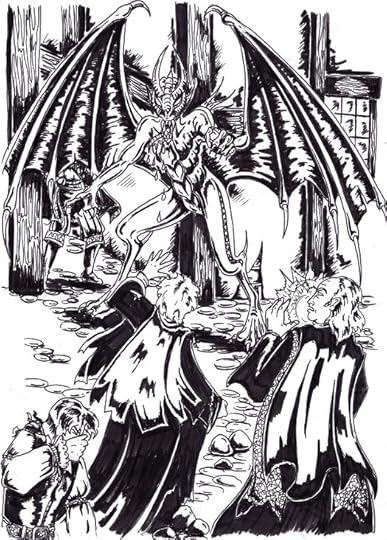

Six Sentence Sunday: The Amber Treasure
Six sentence Sunday #1 The Amber Treasure
A man has five senses and each and every one of them gets used in a battle. That morning of the second day of the Battle of Catraeth, my senses were overwhelmed. You see with a terrifying clarity the approaching army; perceive the fear mingled equally with hate in the eyes of the enemy as well as the terrified pleading expressions of those you have struck down. You feel your heart pounding and later, the terrible crush of battle, the indescribable sensations of your blade cutting flesh and bone, the searing pain of injury and the air burning in your lungs. You taste blood and smell − gods, the smell − you smell sweat and shit and piss, the appalling stench of viscera and the smoke of burning buildings.
Above and beyond all of that, however, is the sense of hearing: it is the sounds you will recall more than anything else when you think of battles you have been in.
From The Amber Treasure
The Amber Treasure
Historical Fiction in Dark Ages Britain
…all good stories are about a sword.
The Amber Treasure is historical fiction set in Dark Age Britain -
598 A.D. Betrayal threatens the Kingdom of Northumbria.
October 12, 2011
Making Audio Books and using them to market your books
An author needs to be open to any opportunities to market their book. Anything which gets the book "out there" and raises its profile is worth considering.
One option I explored was making audio books. The idea here is to release the book as a serialised story. Hopefully if listeners enjoy the book you will get feedback and possibly this can lead to reviews, sales etc.
PodioBooks
There are a number of options whereby an author can go about doing this. One is Podio Books. This site is a FREE to use and free to download site. In theory listeners CAN donate money to authors and in this case the author of the audio book will earn 75% of any donations. In practice donations are (according to the folk who run the site) infrequent but do occasionally happen.
Podiobooks are also supplying some audiobooks to iTunes and a few other sites so there is potential for income. BUT it is best to see this as marketing and not worry about income.
What you do
If you are serious about this possibility you need to do some research. Join Podiobooks and download some books and see how they sound and are put together. Get on the forums and learn a bit about the process. In particular read and re-read the instructions and how to guides. You then produce a sample file which has to go through a mentoring stage before you are cleared to make your audio book.
Equipment
It is best not to record using a Skype headset or similar USB microphone. The help forums will give advice on kit to buy but a good microphone from Maplins or a similar electronic store is a starting point. Serious Podio Books users, just like regular podcasters have mini studio setup that look like a radio studio:
Such a set up, with mixer, headphones, microphone, etc etc will cost £100s but on Podio Books there are suggestions for starting kits of less that $200 say. The key seems to be a good microphone and a good headset.
Software
There are free software packages that you can use to record to and edit your audio book
Audacity
Audacity is a free to download programme that is easy to use. It offers noise reduction. Editing is simple
http://www.download-audacity.com/ is where you grab it. You can set it to take sound from various input routes. You can cut and paste sections, delete errors etc.
The Levelator
The Levelator automatically evens out the sound levels of an audio recording. When you are recording your voice will go up and down in volume. Levelator evens all that out as well as boosting the volume of spoken word.
http://www.singularsoftware.com/levelator.html
Mixcraft
Mixcraft is a paid for programme that allows for blending and mixing various sounds tracks into your recording as well as adding sound effects and making sections of the recording have the sound qualities of certain situations. For eg you could make a part echoey like in a cathedral.
Magnatunes
With the curious tagline of "we are not evil" (at one point Magnatunes got flack along the lines of Napster but pays musicians for their work) Magnatunes is a bit like iTunes - a huge database of music. You can download a lot for free and there are various arrangements if you wish to use tracks on podcasts and audiobooks. With a large array of styles the Audio Book producer can find cheap affordable music to use on their recordings. I used a simple section of music as the "intro" and "outro" to each episode.
Its a Wrap
So with all this hardware and software you record an episode, edit it and mix in some music. You export it as an MP3 file (all the techie details are in the guides). You TAG the file with relevant details and then upload it to Podiobooks. Then you get started on the next.
There is a lot to learn about this process and it DOES take a lot of time to record, edit, tag and upload each episode BUT once you have uploaded it there is the pleasing result of seeing new subscriptions coming online. I put the book up about 18 months ago and 306 folk have subscribed to it in that time.
You can see that I am still getting new subscriptions and ratings:
Having done this I realise that I could do more to make the sound better, pace my reading more, use more emotion, reducing breath sounds, cracks and pops etc- so I think I would do better the next time. I am in fact starting to think about doing another book.
You can take a look at my book page and listen to a bit:

The Amber Treasure on Podio Books
The Amber Treasure
Historical Fiction in Dark Ages Britain
…all good stories are about a sword.
The Amber Treasure is historical fiction set in Dark Age Britain -
598 A.D. Betrayal threatens the Kingdom of Northumbria.
October 5, 2011
Gunpowder and Sorcery in 1666
Here another fantastic sketch by Gill Pearce of Hellion's Art brings to life a dramatic fight in The Last Seal.
The avatars had reached Ben, and as the leading three circled round to his right, the other three flew by on his left, threatening to surround him. Sweating with fear, his pulse racing, he wondered if he could manage to use the Words again, for he felt exhausted; he was also afraid of what the effect on him might be. If he used all his energy now, he would have nothing left with which to face the demon.
Another scream shrilled out from the within the force field encircling the Last Seal, and was cut off, gurgling to silence as Dantalion pounced again. How many was that, Ben wondered: five or six? Too many at any rate, it was time to act – he had to risk it, but how? The lightning bolts he had used had knocked the avatars down and partially disabled them, but it was only temporary; had not destroyed them. Perhaps the loathsome creatures had some protection or defence against it. So, should he conjure fire against them? But no; having seen the delight the pair of avatars had taken in the flames just before they had entered the Guild Hall, they were clearly impervious to that element. What, then? Ben thought hard. Ice? Yes … maybe ice would do it.
He brought his hands together so that his thumbs touched. Then he extended his arms towards the approaching creatures, summoned his strength and shouted: "Kώνος, jää, décharge!"
Read more in The Last Seal - historical Fantasy in 1666

October 1, 2011
IS time travel now possible after all?
As part of school visits I do to talk about my sci fi adventure novel, Tomorrow's Guardian, I ask the children a question. I ask them if they THINK time travel is possible. The classes vary in their response. Some are practical minded and just say "no!" but in some classes we have a lively debate between those who think it is not possible, those they think it might be and some … like me … who perhaps wish it was.
The science
I go on to cover (in a light hearted way) the science behind the question. I get the children to take part in a couple of experiments to cover the real world knowledge.
I start with this man – Albert Einstein. Even 10 or 11 year olds usually know who he is (even if the odd child confuses him with the man who created a monster from dead people!). Some even know the words "theory of relativity." I do two activities to teach them the basics of this theory.
Firstly I have two children come out and pretend to be twins. One goes on a space voyage to the other side of the classroom whilst and the other stays on earth (usually popping behind my screen and gaining my grandads flat cap and walking stick and then emerging). The cards are "atomic clocks" which show the year for both of them
This "experiment" shows what happens if one man goes very fast and the other stays on earth. If you approach light speed time SLOWS down. One man ages whilst the other stays the same age.
I do another experiment having one child sit on the floor with a cloth and the other stand on a chair and we discuss what happens to clocks if one is at the bottom of a valley (in high gravity) and the other at the top of a mountain (in low gravity).
So by doing these I explain how Einstein tells us that Time Travel FORWARD in time is possible – travel fast in a high gravity environment and just like in the Planet of the Apes an astronaut would find himself in the future.
I then go on to discuss whether you can travel BACK in time. We discuss worm holes and the work of Professor Mallet in America who is actually experimenting with rotating laser beams to warp space-time.
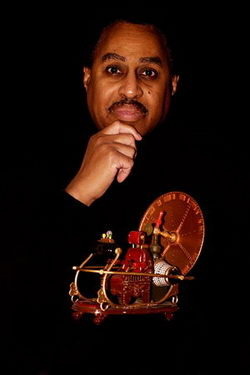
In the end I usually conclude that sadly according to Einstein time travel backwards is NOT possible.
Then, ignoring the fact that time travel is not possible, we go onto have fun about paradoxes and adventures in time travel and to say what time period they would visit if they could go.

Game to demonstrate the grandfather paradox
But then, only a week ago, came some starting news:
Suddenly the scientists are saying they particles they are experimenting with SEEM to be going faster than light. Now because this is impossible, they frankly dont believe it themselves and have asked other scientists to tell them what they have done wrong.
HOWEVER IF and only IF something can go faster than light then suddenly the rules about time travel change. Einstein's theories show that something travelling faster than light would actually go backwards in time.
Not only that BUT suddenly Star Trek like exploration of the galaxy might JUST be possible.
I am a realist and feel that in the end some boring and mundane explanation will be found for all this that returns us to the status quo. But right now, for a brief time, we can dream about the possibilities that Time Travel might JUST be possible after all.
He had hardly settled back in his bed before he sat bolt upright again. Someone was moving about in his room. The light from the street lamp outside his bedroom window was now blocked by a tall, dark shape.
"Dad? Is that you?" Tom asked sleepily.
The figure moved closer but did not speak.
Tom yawned. "What's going on, Dad? What time is it?"
"Time?" came a man's deep voice, with an almost mocking tone.
Before Tom had registered that it was not his dad, the man leant over him.
"Time?" he repeated. "Why, Tom, it's any time you want it to be!"

